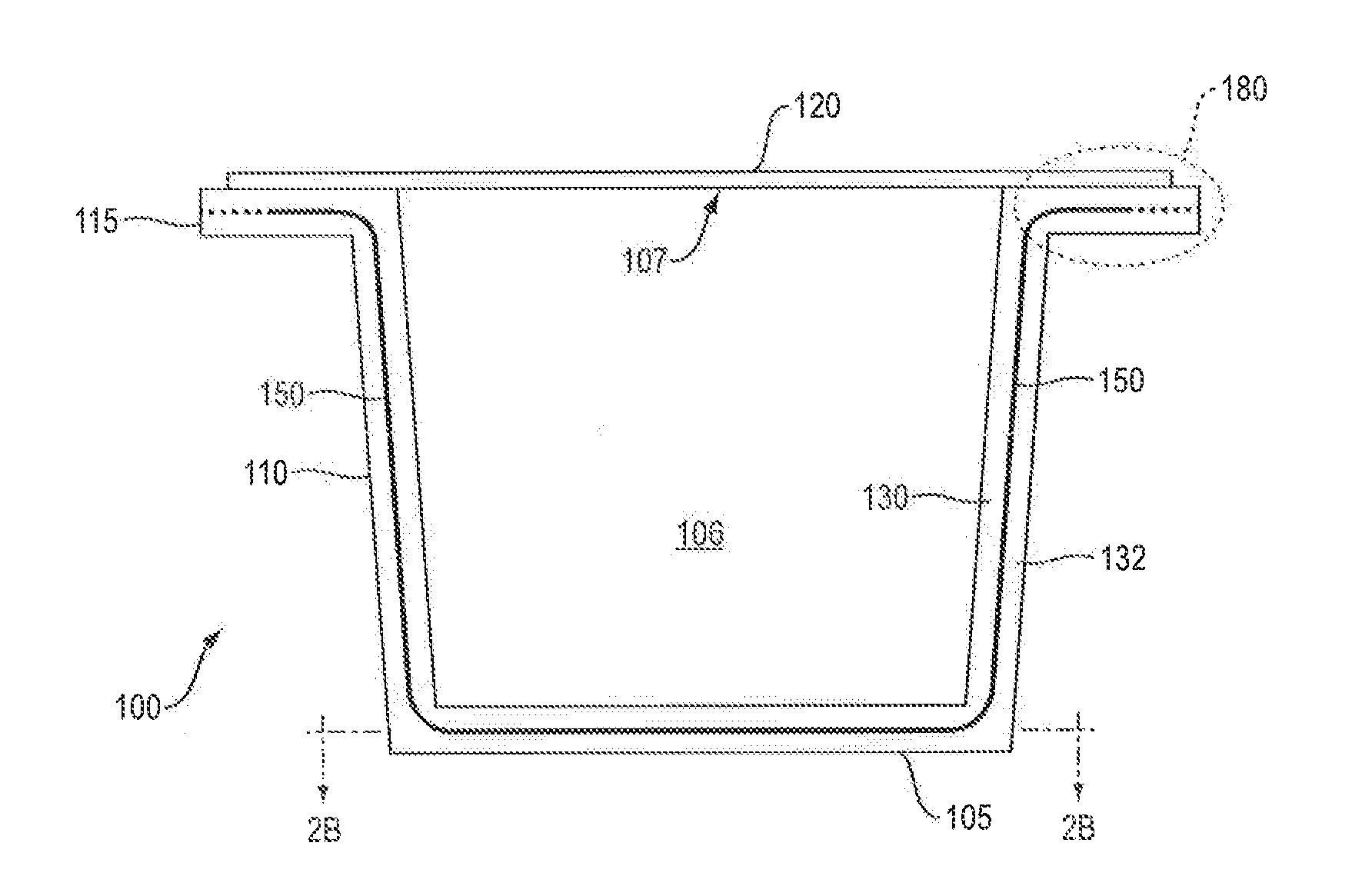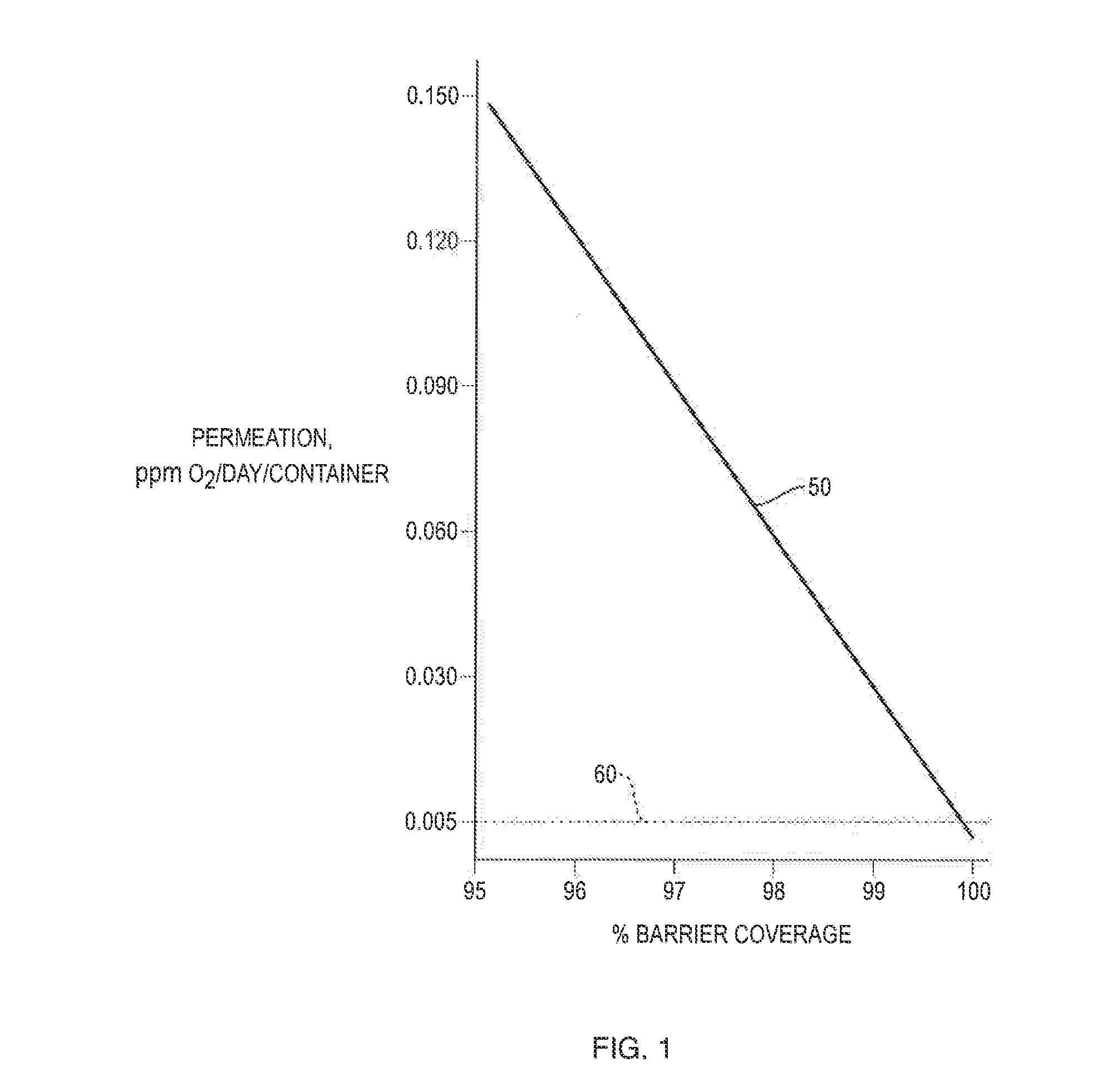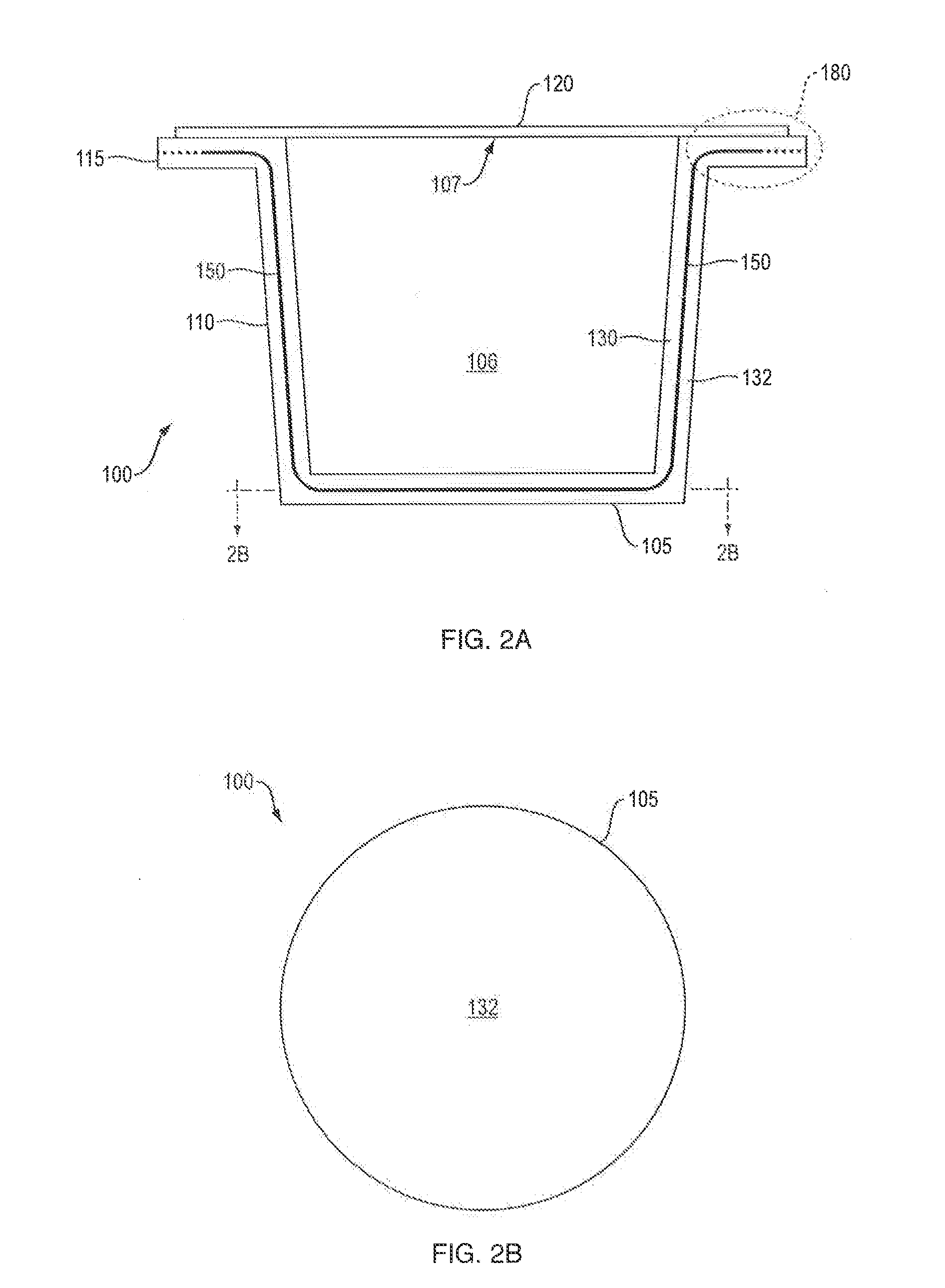Gas impermeability for injection molded containers
a technology of injection molding container and impermeability, which is applied in the direction of synthetic resin layered products, domestic packaging, packaging, etc., can solve the problems of inadequate barrier layer, gas permeation may occur, and limited co-injection process, so as to increase the permeability of barrier material and increase the moisture content
- Summary
- Abstract
- Description
- Claims
- Application Information
AI Technical Summary
Benefits of technology
Problems solved by technology
Method used
Image
Examples
Embodiment Construction
[0034]FIG. 1 schematically shows an oxygen permeation curve 50 though the wall of a plastic co-injection molded article as a function of coverage of an interior barrier relative to the total exposed wall surface area of the sealable portion of the article. FIG. 1 also shows a target permeation rate 60 representing an optimal permeation to prevent undesirable degradation of the substance inside the sealed container. The interior layer materials associated with the FIG. 1 graph may consist of EVOH, MXD6 nylon or other passive barrier materials; EVOH, MXD6 nylon or other barrier materials, any of which has an oxygen scavenging component; or EVOH, MXD6 nylon or other barrier materials, any of which has a desiccant component. As can be seen in FIG. 1, more than 99% coverage is required to achieve the illustrated target permeation rate 60, which is 0.005 ppm O2 / day / container (ppm calculated on the basis of liquid content of the container). Though the target permeation rate 60 may depend u...
PUM
| Property | Measurement | Unit |
|---|---|---|
| diameter | aaaaa | aaaaa |
| diameter | aaaaa | aaaaa |
| polymeric | aaaaa | aaaaa |
Abstract
Description
Claims
Application Information
 Login to View More
Login to View More - R&D
- Intellectual Property
- Life Sciences
- Materials
- Tech Scout
- Unparalleled Data Quality
- Higher Quality Content
- 60% Fewer Hallucinations
Browse by: Latest US Patents, China's latest patents, Technical Efficacy Thesaurus, Application Domain, Technology Topic, Popular Technical Reports.
© 2025 PatSnap. All rights reserved.Legal|Privacy policy|Modern Slavery Act Transparency Statement|Sitemap|About US| Contact US: help@patsnap.com



